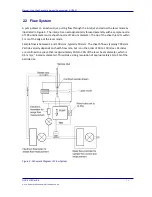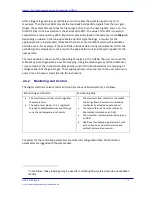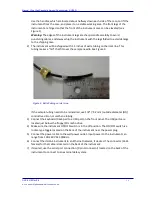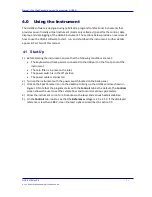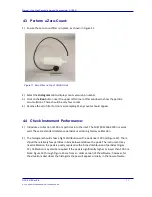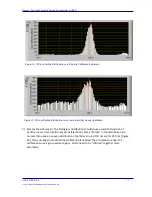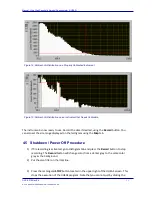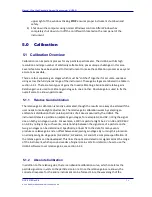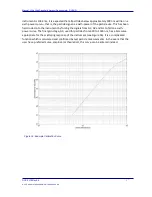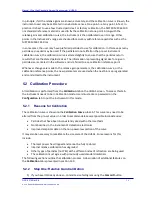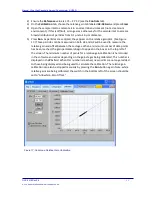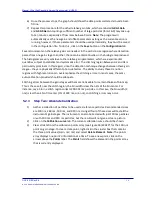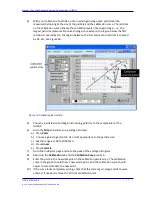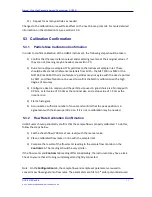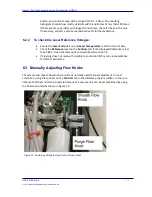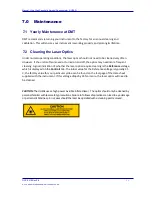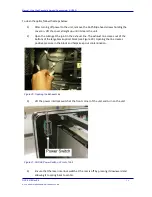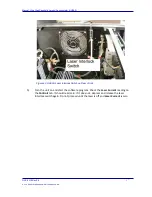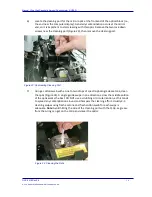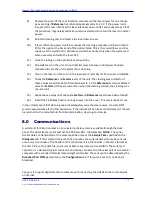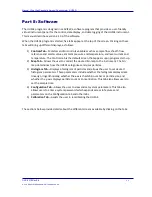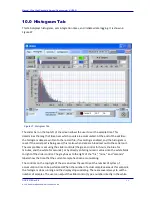
Manual, Ultra High Sensitivity Aerosol Spectrometer (UHSAS)
DOC-0210 Rev E-4
2 9
© 2017 DROPLET MEASUREMENT TECHNOLOGIES
2)
Ensure the
Reference
value is 1.75 – 2.75 V (see the
Controls
tab).
3)
On the
Calibration
tab, choose the relative gain tab labeled
G3:G2 Gain
and press
Clear
.
4)
Open the sample inlet to ambient air in a normal lab environment (not a cleanroom
environment). If this is difficult, arrange some other way for the sample inlet to access a
broad distribution of particles from 0.1 µm to 1.0 µm diameter.
5)
Press
Run
. As particles are sampled, they appear on the relative gain plot. (See Figure
17.) Those particles can be measured on both G3 and G2 will be used to measure the
relative gain and offset between these stages. When a minimum number of data points
has been reached, the gain parameters begin to appear in the boxes in the top left of
the screen. The minimum number of points for a relative gain calibration is hard-coded
in the software and varies depending on the gain stages being calibrated. This number is
displayed in the
Pts
field. When this number is reached, new points are no longer added
to those being displayed and being used to calculate the calibration. The relative gain
calibration can also be stopped manually by pressing the
Run
button again.
Note
: while
relative gains are being calibrated, the switch in the bottom left of the screen should be
set to “Allow Non-Zero Offset.”
Figure 17: Running a Relative Gain Calibration

